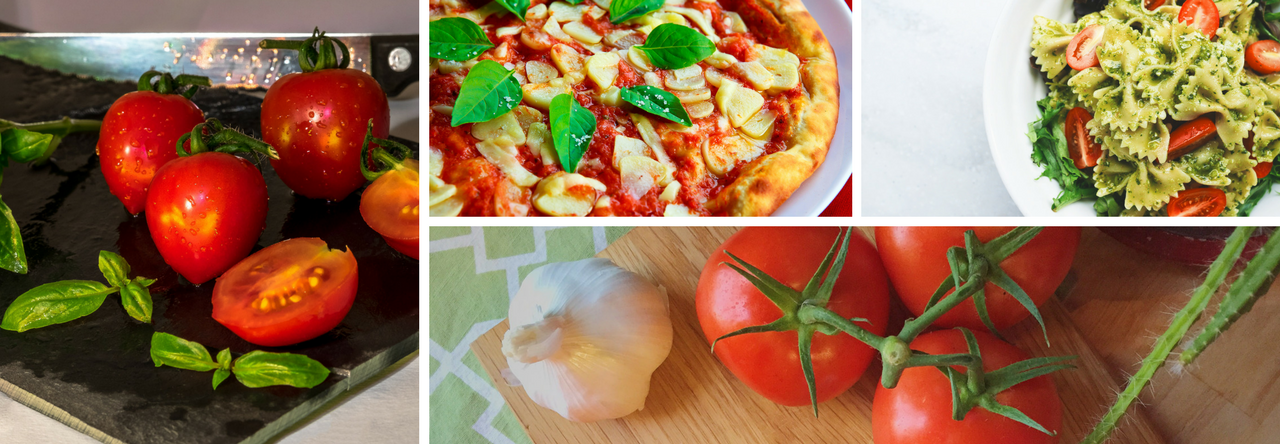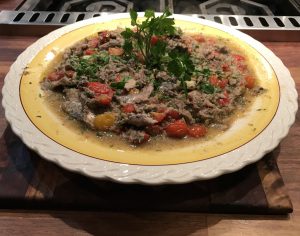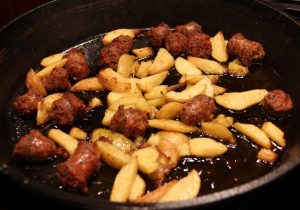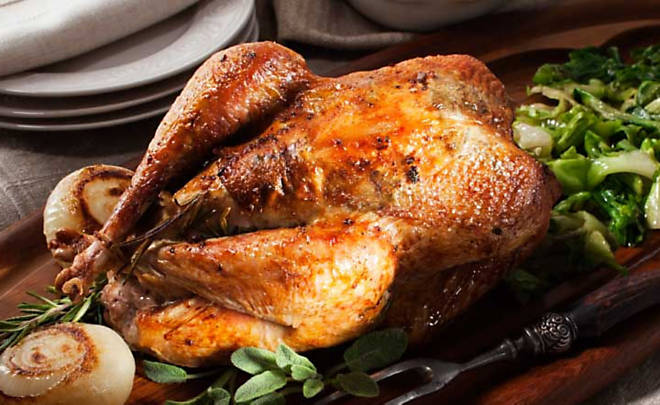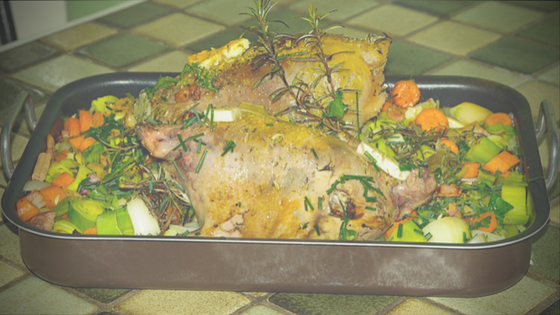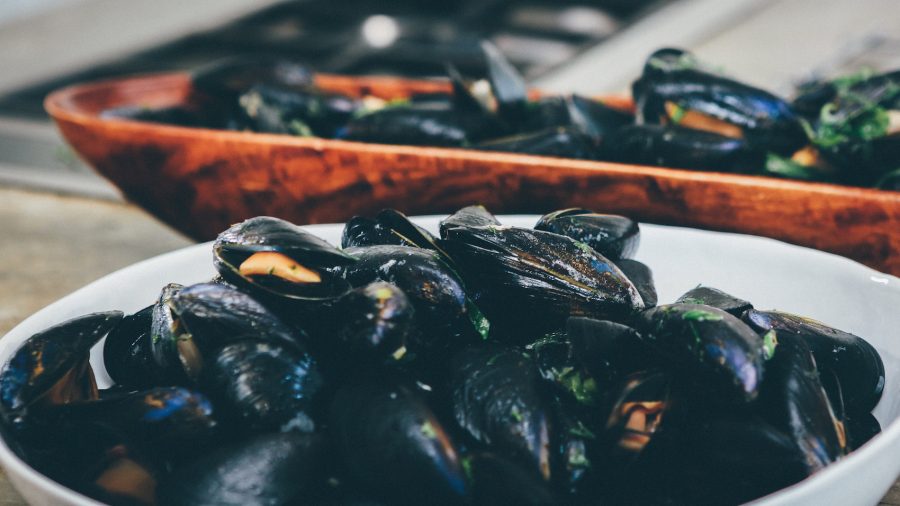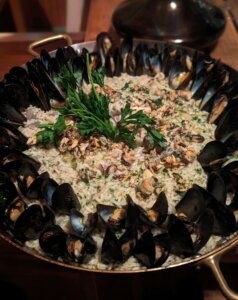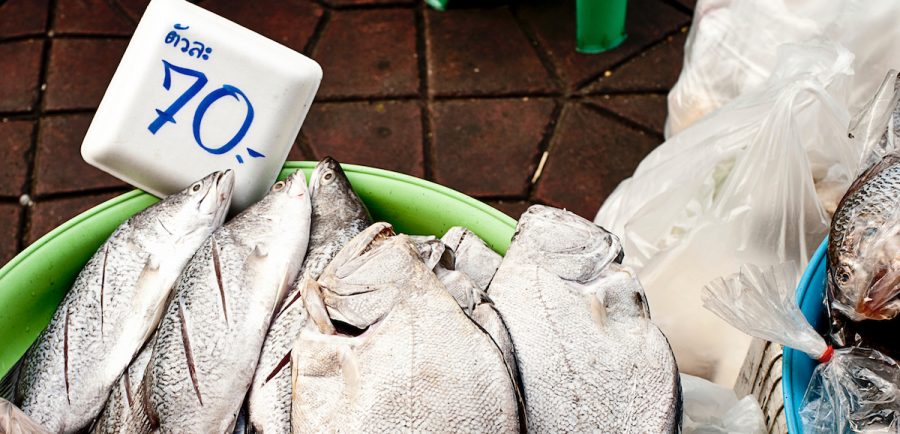Try this recipe if you like raw meat—otherwise, no need to keep reading! I love it, although the first time I tried it, at the Café de Paris in Roma when I was 18, I found it disgusting.
Now, every time I go to a French Bistro, I order a Tartar.
Of course I had to do something different than what I eat at the French Bistro, so I made an “Hawaiian Tartare”. It’s got nothing to do with the Tartar you are used to eating in French restaurants, but certainly an excellent Tartar.
It takes 5 minutes to prepare, so it’s a great recipe if you want to eat something good and need to make it in minutes. Also, it’s an excellent appetizer when you have many people over for dinner. I often make it when I host large parties.
Ingredients
- 1 pound of filet mignonor other lean meat –remove any fat from it, while it’s cold from the refrigerator.
- 1 avocado, cold from the refrigerator
- 1 bunch of cilantro
- 1 lime squeezed
- 1 sweet onion –if you cannot find it, red onion, cold from fridge
- 3 egg yolks, cold from fridge
- 1⁄3 of cup of tomatillo/serrano sauce –see recipe below or buy premade. The best store-bought tomatillo sauces are from Frontera Grill and Yellowbird (Austin)
- Hawaiian, Calabria, or Serrano chile, to taste—or none if you do not eat spicy foods. (I make mine quite spicy)
- 1 TB. extra virgin olive oil, salt and pepper to taste.
Preparation
- Put everything—except the meat—in a food processor and blend everything together.
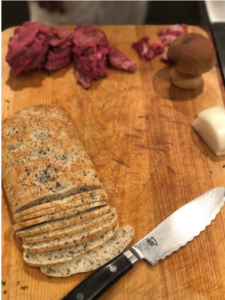
- Add the meat and re-activate the food processor for a few seconds: you want the meat to be cut in small pieces but you do not want an puree! So use your judgment and remember you can always process more, but once you made a puree you cannot go back!
- It must be eaten as soon as it is made.
- Serve with chips, such as the Blue Corn chips, and beer or champagne.
Note: Resist the temptation to add more ingredients, please.
Homemade Tomatillo Sauce
Tomatillo sauce is a great addition to any southwestern style dinner. I use it in my Hawaiian-style steak tartar, as well as several other recipes.
Ingredients
- 5 – 8 small tomatillos, husks removed
- 1 – 2 fresh hot green peppers
- A few sprigs of fresh cilantro
- ¼ cup of chopped sweet onion
- Salt
Preparation
- Turn the oven to broil. Place the husked tomatillos on a baking sheet and put in the oven for about 5 minutes, until the skin gets charred in an uneven pattern – don’t let them get completely black! Remove the baking sheet from the oven and turn them over. Put back in the oven and cook for a another 4 to 5 minutes.
- Remove from oven and let cool.
- Put them in a food processor, along with the juices that ran off of the tomatillos while they roasted. Put everything into a blender and add about ¼ cup of hot water. Process for just a few seconds until the texture is thick and chunky.
Italiano:Tartara
Se vi piace la carne cruda, provate la mia variazione della bistecca alla tartara. La prima volte che l’ho mangiata al caffè de Paris a Via Veneto a Roma l’ho trovata disgustosa, poi ho cambiato idea e ora se mangio in un French Bistro la ordino sempre. Per non copiare i Francesi, ho cambiato la ricetta e sviluppato una tartara Hawaiiana partendo da una ricotta Tex-mex. Quale è meglio? Non lo so, sono molto diverse ma se vi piace la tartara dovete assolutamente provare la mia. E se non vi piace la Tartara allora non potete fare a meno di provarla perché sicuramente cambierete idea!
In breve, vi serve carne magra, il filetto è ideale, e un robot da cucina in cui metterete per 250 gr, di carne: 1 avocado, 1 mazzo di coriandolo – assolutamente coriandolo, non cambiatelo col prezzemolo per favore- 1⁄3 di cup di tomatillo sauce con peperoncini Serrano (oppure peperoncini calabresi o a vostra scelta, o senza peperoncini se non mangiate piccante-, non ho idea come si dice in Italiano la ricetta su come fare il tomatillo è di sopra in Inglese oppure cercatelo già fatto –Castroni a Roma, via Cola di Rienzo ce l’ha sicuramente per esempio—un lime—o limone-—spremuto, 3 rossi d’uovo (tutti gli ingredienti devono essere freddi, cioè tenuti in frigo, 1 cucchiaio d’olio d’oliva sale e pepe. Mischiare tutti gli ingredienti nel robot da cucina tranne la carne, quando gli ingredienti diventano una poltiglia aggiungere la carne e riattivare brevemente il robot da cucina: volete che la carne sia a pezzi piccoli, ma non esagerate fino a farla diventare un omogenato per poppanti!
Servite insieme alle blue chips Messicane e birra –oppure champagne freddissimo e pane. Ci vogliono 5 minuti a prepararla ed è un ottimo antipasto se vi arrivano improvvisamente 10- 100 persone a casa

